Shonita, Soṇita, Śoṇita, Sonita: 25 definitions
Introduction:
Shonita means something in Buddhism, Pali, Hinduism, Sanskrit, Marathi, Hindi, biology. If you want to know the exact meaning, history, etymology or English translation of this term then check out the descriptions on this page. Add your comment or reference to a book if you want to contribute to this summary article.
The Sanskrit term Śoṇita can be transliterated into English as Sonita or Shonita, using the IAST transliteration scheme (?).
Alternative spellings of this word include Shonit.
In Hinduism
Ayurveda (science of life)
Source: Wisdom Library: Āyurveda and botanyŚoṇita (शोणित) refers to “female genetic prototype”. It is one of the factors in determining the Prakṛti, which is the genetically determined physical and mental constitution of an individual. Also see Śukra, which refers to the “male genetic prototype”. The term is used throughout Ayurvedic literature such as the Suśruta-saṃhitā and the Caraka-saṃhitā.
Source: gurumukhi.ru: Ayurveda glossary of termsŚoṇita (शोणित):—1. Synonym of Rakta. 2. Synonym of Ārtava.
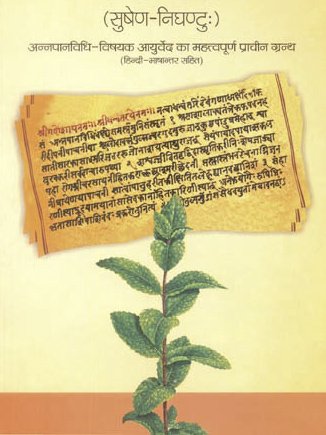
Āyurveda (आयुर्वेद, ayurveda) is a branch of Indian science dealing with medicine, herbalism, taxology, anatomy, surgery, alchemy and related topics. Traditional practice of Āyurveda in ancient India dates back to at least the first millenium BC. Literature is commonly written in Sanskrit using various poetic metres.
Purana and Itihasa (epic history)
Source: archive.org: Shiva Purana - English TranslationŚoṇita (शोणित) or Śoṇitapura is the name of an ancient town, according to the Śivapurāṇa 2.3.15 (“The penance and reign of Tārakāsura”).—Accordingly, after Tāraka requested boons from Brahmā: “O excellent sage, thus requested by that demon, I granted him two boons and hastened back to my abode. Securing the excellent boon in accordance with his cherished desire, the demon was very glad and went to the town Śoṇita [i.e., śoṇitākhyapuraṃ]. That great demon was crowned the king of the three worlds with the permission of Śukra, the preceptor of the demons. [...]”.
Note: Śoṇita was the capital of the Asura territory, later on called Bāṇapura, as it was ruled by the powerful Asura Bāṇa, the devotee of Śiva. According to Dey (G. D. PP. 21, 189) Śoṇitapura is still called by that name, and is situated in Kamaun on the bank of the river Kedāra-Gaṅgā or Mandākinī about 6 miles from Uṣāmaṭha at a short distance from Guptakāśī”.
Source: Cologne Digital Sanskrit Dictionaries: The Purana IndexŚoṇita (शोणित).—A son of Śūra.*
- * Brahmāṇḍa-purāṇa III. 71. 138; Vāyu-purāṇa 96. 136.
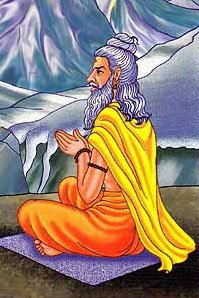
The Purana (पुराण, purāṇas) refers to Sanskrit literature preserving ancient India’s vast cultural history, including historical legends, religious ceremonies, various arts and sciences. The eighteen mahapuranas total over 400,000 shlokas (metrical couplets) and date to at least several centuries BCE.
Shaktism (Shakta philosophy)
Source: Google Books: ManthanabhairavatantramŚoṇita (शोणित) refers to “blood” and is used to describe Goddess Śuṣkā, according to the Devīpañcaśatikā verse 2.74-79.—Accordingly: “One should draw the supreme goddess there. She is Śuṣkā and, auspicious, her face is emaciated. She has two arms and one face. She has no flesh and no blood (runs through her veins) [i.e., śoṇita—māṃsaśoṇitavarjitām]. (Made of just) tendons and bones, her body is thin and she likes (to eat) human entrails and the like constantly. She is seated on Rudra’s severed head and her feet are placed on two (others). On the left is Viṣṇu’s head and on the right that of Indra and her legs are bent. She is the first (of all the deities) and fills (and nourishes all things). [...]”.
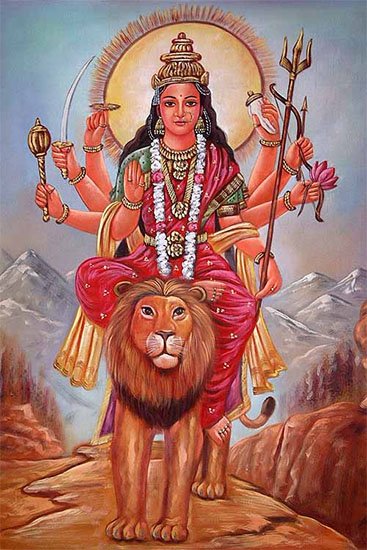
Shakta (शाक्त, śākta) or Shaktism (śāktism) represents a tradition of Hinduism where the Goddess (Devi) is revered and worshipped. Shakta literature includes a range of scriptures, including various Agamas and Tantras, although its roots may be traced back to the Vedas.
Kavya (poetry)
Source: Brill: Śaivism and the Tantric Traditions (kavya)Śoṇita (शोणित) (Cf. Rudhira) refers to “blood”, according to Bāṇa’s Kādambarī (p. 224-228).—Accordingly, “[Then he notices the dvārapāla (guardian of the gate), about which it is said that] [Caṇḍikā] had protected her entrance with an iron buffalo installed in front, which, because of the fact that it had been marked by palms [dyed with] red-sandalwood, seemed to have been stamped by Yama’s hand-prints red with blood (rudhira-aruṇa), the red eyes of which were being licked by jackals greedy for drops of blood (śoṇita-lava)”.
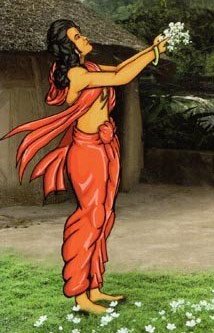
Kavya (काव्य, kavya) refers to Sanskrit poetry, a popular ancient Indian tradition of literature. There have been many Sanskrit poets over the ages, hailing from ancient India and beyond. This topic includes mahakavya, or ‘epic poetry’ and natya, or ‘dramatic poetry’.
Pancaratra (worship of Nārāyaṇa)
Source: Shodhganga: Kasyapa Samhita—Text on Visha Chikitsa (p)Śoṇita (शोणित) refers to the “blood (of serpents)”, according to the Viṣvaksena Samhitā (verse 26.61) which mentions the efficacy of the Garuḍa-mantra by paying obeisance to him.—It mentions that Garuḍa also renowned as Suparṇa, the king of birds and the illustrious son of Vinatā, is adorned by the eight divine serpents residing in the seven nether-worlds; his body is smeared with the blood of serpents (nāga-śoṇita) he has slain. Garuḍa is eulogised as the vehicle of Viṣṇu, who can make the three worlds tremble with his primal strength, and who conquered Brahmā and the other gods (and brought the nectar) to free his mother from bondage:
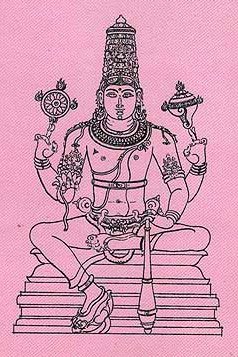
Pancaratra (पाञ्चरात्र, pāñcarātra) represents a tradition of Hinduism where Narayana is revered and worshipped. Closeley related to Vaishnavism, the Pancaratra literature includes various Agamas and tantras incorporating many Vaishnava philosophies.
In Buddhism
Mahayana (major branch of Buddhism)
Source: Wisdom Library: Maha Prajnaparamita SastraŚoṇita (शोणित) refers to “blood”, according Mahāprajñāpāramitāśāstra (chapter XLVI).—There are also Pretas who emit fire from their mouth (ulkāmukha): flying butterflies throw themselves into this fire, and the Pretas eat them. There are also Pretas who eat excrement (gūtha), spit (śleṣman), pus and blood (pūya-śoṇita), the water from laundry, who feed on oblations (śraddhabhoktṛ) or who devour the afterbirth (garbhamalāhāra). There are all kinds of starving Pretas of this kind.
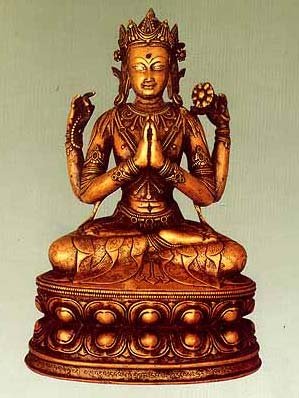
Mahayana (महायान, mahāyāna) is a major branch of Buddhism focusing on the path of a Bodhisattva (spiritual aspirants/ enlightened beings). Extant literature is vast and primarely composed in the Sanskrit language. There are many sūtras of which some of the earliest are the various Prajñāpāramitā sūtras.
Biology (plants and animals)
Source: Google Books: CRC World Dictionary (Regional names)Shonita in India is the name of a plant defined with Crocus sativus in various botanical sources. This page contains potential references in Ayurveda, modern medicine, and other folk traditions or local practices It has the synonym Safran officinarum Medik. (among others).
Example references for further research on medicinal uses or toxicity (see latin names for full list):
· Regnum Vegetabile, or ‘a Series of Handbooks for the Use of Plant Taxonomists and Plant Geographers’ (1993)
· Illustrations of the Botany of the Himalayan Mountains (1834)
· Nomenclator Botanicus (1840)
· Species Plantarum (1753)
· BMC Complementary and Alternative Medicine (2004)
· Gard. Chron. (1879)
If you are looking for specific details regarding Shonita, for example diet and recipes, health benefits, extract dosage, chemical composition, side effects, pregnancy safety, have a look at these references.

This sections includes definitions from the five kingdoms of living things: Animals, Plants, Fungi, Protists and Monera. It will include both the official binomial nomenclature (scientific names usually in Latin) as well as regional spellings and variants.
Languages of India and abroad
Pali-English dictionary
Source: BuddhaSasana: Concise Pali-English Dictionarysoṇita : (nt.) blood.
Source: Sutta: The Pali Text Society's Pali-English DictionarySoṇita, (nt.) (Sk. śoṇita, fr. śoṇa red) blood Th. 2, 467; DA. I, 120; Vism. 259. (Page 724)
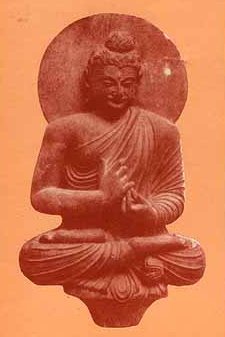
Pali is the language of the Tipiṭaka, which is the sacred canon of Theravāda Buddhism and contains much of the Buddha’s speech. Closeley related to Sanskrit, both languages are used interchangeably between religions.
Marathi-English dictionary
Source: DDSA: The Molesworth Marathi and English Dictionaryśōṇita (शोणित).—n S Blood.
--- OR ---
śōṇita (शोणित).—a S Blood-colored.
Source: DDSA: The Aryabhusan school dictionary, Marathi-Englishśōṇita (शोणित).—n Blood. a Blood-coloured.
Marathi is an Indo-European language having over 70 million native speakers people in (predominantly) Maharashtra India. Marathi, like many other Indo-Aryan languages, evolved from early forms of Prakrit, which itself is a subset of Sanskrit, one of the most ancient languages of the world.
Sanskrit dictionary
Source: DDSA: The practical Sanskrit-English dictionaryŚoṇita (शोणित).—a. [śoṇ-itac]
1) Red, purple, crimson.
-ṇam 1 Blood; उपस्थिता शोणितपारणा मे (upasthitā śoṇitapāraṇā me) R.2.39; Ve.1.21; Mu.1.8.
2) Saffron.
Source: Cologne Digital Sanskrit Dictionaries: Edgerton Buddhist Hybrid Sanskrit DictionaryŚoṇīta (शोणीत).—m.c. for Sanskrit śoṇita, blood: Lalitavistara 208.14 (verse); also AMg. soṇīya, Ācār. (Schubring) 39.10 (Smith, see § 1.38 fn. 15, p. 12).
Source: Cologne Digital Sanskrit Dictionaries: Shabda-Sagara Sanskrit-English DictionaryŚoṇita (शोणित).—mfn.
(-taḥ-tā-taṃ) Red, crimson, purple. n.
(-taṃ) 1. Blood. 2. Saffron. E. śoṇa redness, itac aff.
Source: Cologne Digital Sanskrit Dictionaries: Benfey Sanskrit-English DictionaryŚoṇita (शोणित).—i. e. śoṇa + ita, I. adj. Red, crimson, [Raghuvaṃśa, (ed. Stenzler.)] 2, 39. Ii. n. 1. Blood, [Pañcatantra] iii. [distich] 32. 2. Saffron.
Source: Cologne Digital Sanskrit Dictionaries: Cappeller Sanskrit-English DictionaryŚoṇita (शोणित).—[neuter] blood; [abstract] tva [neuter]
Source: Cologne Digital Sanskrit Dictionaries: Monier-Williams Sanskrit-English Dictionary1) Śoṇita (शोणित):—[from śoṇ] mfn. red, [Horace H. Wilson]
2) [v.s. ...] n. (ifc. f(ā). ) blood (also [plural]), [Gṛhya-sūtra and śrauta-sūtra] etc. etc.
3) [v.s. ...] n. the sap of trees, resin, [Suśruta]
4) [v.s. ...] saffron, [Bhāvaprakāśa]
5) Śonita (शोनित):—śonāya, śonita, incorrect for śoṇāya, ṇita.
Source: Cologne Digital Sanskrit Dictionaries: Yates Sanskrit-English DictionaryŚoṇita (शोणित):—(taṃ) 1. n. Blood; saffron. a. Red, crimson, purple.
Source: DDSA: Paia-sadda-mahannavo; a comprehensive Prakrit Hindi dictionary (S)Śoṇita (शोणित) in the Sanskrit language is related to the Prakrit word: Soṇia.
[Sanskrit to German]
Sanskrit, also spelled संस्कृतम् (saṃskṛtam), is an ancient language of India commonly seen as the grandmother of the Indo-European language family (even English!). Closely allied with Prakrit and Pali, Sanskrit is more exhaustive in both grammar and terms and has the most extensive collection of literature in the world, greatly surpassing its sister-languages Greek and Latin.
Hindi dictionary
Source: DDSA: A practical Hindi-English dictionaryŚoṇita (शोणित) [Also spelled shonit]:—(nm) blood; (a) red, bloody; —[śarkarā] blood sugar.
...
Kannada-English dictionary
Source: Alar: Kannada-English corpusŚōṇita (ಶೋಣಿತ):—[adjective] = ಶೋಣ [shona]1.
--- OR ---
Śōṇita (ಶೋಣಿತ):—
1) [noun] = ಶೋಣ [shona]2 - 7.
2) [noun] the dried, aromatic stigmas of the perennial plant Crocus sativus of Iridaceae family, used in flavouring and colouring foods, and formerly in medicine; saffron powder.
3) [noun] a reproductive cell produced by women; the ovum; the egg.
Kannada is a Dravidian language (as opposed to the Indo-European language family) mainly spoken in the southwestern region of India.
Nepali dictionary
Source: unoes: Nepali-English DictionaryŚoṇita (शोणित):—adj. red; purple; crimson; n. red; blood;
Nepali is the primary language of the Nepalese people counting almost 20 million native speakers. The country of Nepal is situated in the Himalaya mountain range to the north of India.
See also (Relevant definitions)
Starts with (+28): Shonitabhishyanda, Shonitabhrit, Shonitabinduvarshin, Shonitacandana, Shonitachandana, Shonitadigdha, Shonitadushti, Shonitagandha, Shonitahvaya, Shonitaja, Shonitajavrana, Shonitakhya, Shonitaksha, Shonitalava, Shonitamamsasara, Shonitamaya, Shonitamehana, Shonitamehi, Shonitamehin, Shonitapa.
Ends with: Anushonita, Artavashonita, Atyantashonita, Dushtashonita, Jivashonita, Mamsashonita, Manushyashonita, Nagashonita, Pitashonita, Pittashonita, Puyashonita, Trinashonita, Uparatashonita, Vatashonita, Vishonita.
Full-text (+103): Shonitapura, Puyashonita, Shonitopala, Vatashonita, Shonitapa, Shonitokshita, Shonitahvaya, Jivashonita, Shonitapitta, Shonitaparana, Shonitasharkara, Shonitacandana, Shonitavarnana, Shonitoda, Shonitarbuda, Shonitaksha, Pitashonita, Mamsashonita, Shonitarshas, Manushyashonita.
Relevant text
Search found 27 books and stories containing Shonita, Soṇita, Śoṇita, Sonita, Śōṇita, Śoṇīta, Śonita; (plurals include: Shonitas, Soṇitas, Śoṇitas, Sonitas, Śōṇitas, Śoṇītas, Śonitas). You can also click to the full overview containing English textual excerpts. Below are direct links for the most relevant articles:
Sahitya-kaumudi by Baladeva Vidyabhushana (by Gaurapada Dāsa)
Text 7.7 < [Chapter 7 - Literary Faults]
Text 10.248 < [Chapter 10 - Ornaments of Meaning]
Text 8.30 < [Chapter 8 - Literary Qualities]
Charaka Samhita (English translation) (by Shree Gulabkunverba Ayurvedic Society)
Chapter 24 - The Blood derived through Systematic Regimen (Vidhi-shonita) < [Sutrasthana (Sutra Sthana) — General Principles]
Chapter 29 - The therapeutics of Rheumatic Conditions (vata-shonita-cikitsa) < [Cikitsasthana (Cikitsa Sthana) — Section on Therapeutics]
Atharvaveda and Charaka Samhita (by Laxmi Maji)
Vāta-śoṇita (gout) and Vāta-rakta (arthritis) < [Chapter 4 - Diseases and Remedial measures (described in Caraka-saṃhitā)]
Gynecic disorders and Impotency < [Chapter 4 - Diseases and Remedial measures (described in Caraka-saṃhitā)]
Manusmriti with the Commentary of Medhatithi (by Ganganatha Jha)
Verse 4.168 < [Section XIV - Other Duties]
Verse 11.207 < [Section XXVII - Expiation for hurting and insulting a Brāhmaṇa]
Verse 11.208 < [Section XXVII - Expiation for hurting and insulting a Brāhmaṇa]
Taittiriya Upanishad Bhashya Vartika (by R. Balasubramanian)
Verse 2.164-165 < [Book 2 - Brahmavallī]
Jivanandana of Anandaraya Makhin (Study) (by G. D. Jayalakshmi)
Other Diseases < [Chapter 4 - Āyurvedic principles in Jīvanandana Nāṭaka]
Act VI (Summary) < [Chapter 3 - Summary of the Play Jīvānandana Nāṭaka]